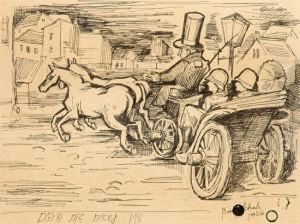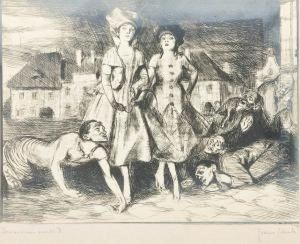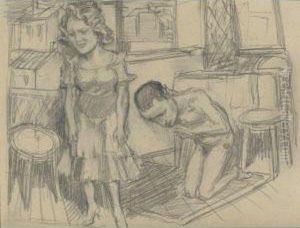Bruno Schulz Paintings
Bruno Schulz was a Polish-Jewish writer, fine artist, literary critic, and art teacher born on July 12, 1892, in Drohobych, then part of the Austro-Hungarian Empire, in what is now Ukraine. Schulz is best known for his short stories and his complex, metaphorical style, which has often been compared to that of Kafka and Proust. His literary works, chiefly 'The Street of Crocodiles' (originally published as 'Cinnamon Shops') and 'Sanatorium Under the Sign of the Hourglass', blend elements of reality with fantasy, creating a unique, surreal universe. Schulz's narratives, rich in mythological themes and Jewish folklore, explore themes of memory, time, and search for meaning.
Schulz's life was marked by the turbulent history of Eastern Europe in the first half of the 20th century. Despite his significant talent, he spent most of his life in his hometown, where he worked as a high school teacher of drawing and handicrafts. His artistic output was not limited to writing; he was also a gifted graphic artist, known for his drawings and book illustrations, which often explored similar themes to his written work.
The rise of Nazism and the outbreak of World War II dramatically affected Schulz's life. In 1941, following the German invasion of Poland and the establishment of the Drohobych ghetto, Schulz lived under increasingly dire conditions. His life came to a tragic end on November 19, 1942, when he was shot dead on the street by a Nazi officer in the Drohobych Ghetto. His death was a result of a personal feud between Nazi officers rather than an organized execution.
Schulz's legacy has grown over the years, with his work influencing a wide range of writers, artists, and filmmakers around the world. Despite a relatively small body of work, largely due to his untimely death, Schulz is considered one of the most significant figures in 20th-century Polish literature and Jewish cultural history. His works have been translated into many languages, and he has been the subject of numerous scholarly studies, films, and art projects. The enduring fascination with Schulz's life and work testifies to his profound impact on the literary and artistic imagination.













